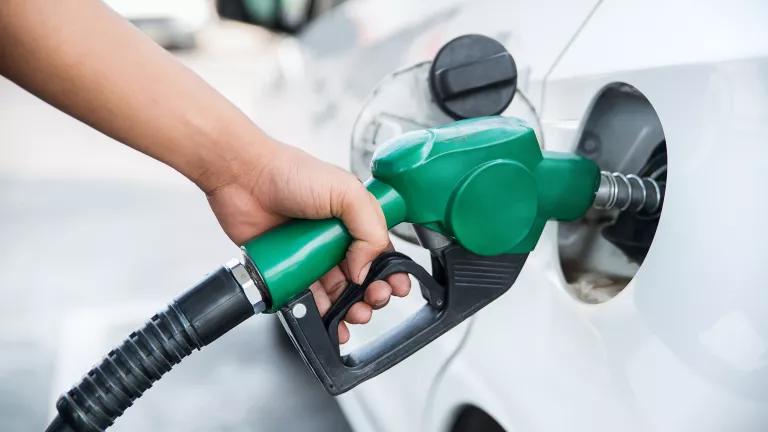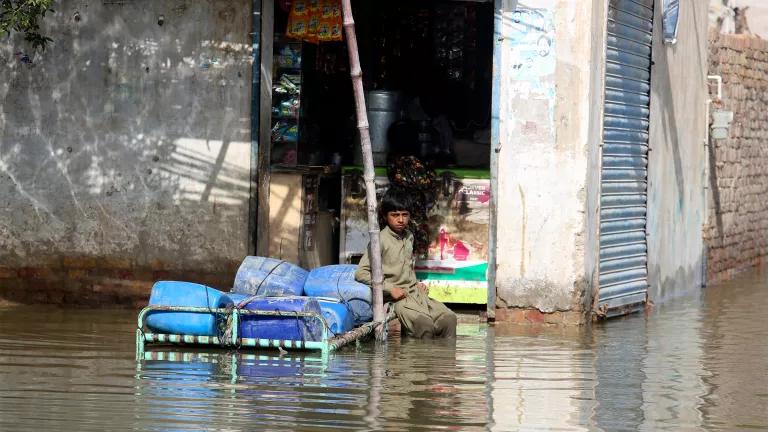Tapping the Infrastructure Bill to Break Our Oil Addiction
We’ve seen this movie before. International conflict and global marketplace trends drive up the price of oil. The price at the pump goes up. And people suffer, especially those who can least afford it.

iStock
We’ve seen this movie before.
International conflict and global marketplace trends drive up the price of oil. The price at the pump goes up. And people suffer, especially those who can least afford it.
The situation got so bad in the 2000s that oil man George W. Bush declared “America is addicted to oil” in his 2006 State of the Union address. The following year for the first time in nearly two decades we increased fuel efficiency standards for our gas-guzzling car and truck fleet (read more here). It looked like we might be on our way to breaking free of oil.
But prices dropped, other big issues consumed the national agenda, and we reverted to our old habits. We now consume almost 20 million barrels of oil per day (a barrel contains about 42 gallons), two-thirds of which goes into transportation.
There are big problems with this addiction. First, it makes us weak as a country. We’re shackled to a global oil marketplace. One in which Exxon Mobil, Shell, BP, and Chevron made a combined $75 billion in profits in 2021 alone. And while you have probably heard about big companies such as ExxonMobil and Shell Oil, you may know less about the shadowy giants called national oil companies (NOCs). These state-controlled titans influence global prices from their perches and trillions of dollars in assets in countries such as Saudi Arabia, Venezuela, and yes, Russia.
The private and national oil companies are often intertwined. Exxon, BP, and Shell have been heavily invested in Russia, with Exxon alone having 1,000 employees and more than $4 billion in assets in Russia. And we are beholden to these national and private oil companies as long as transportation is so overwhelmingly dependent on oil. So, oil addiction undermines national security.
The other problem with our addiction is the pollution it generates. Transportation surpassed the power sector as the nation’s leading contributor to heat-trapping carbon pollution several years ago. In addition to that global pollutant, transportation also contributes to regional and local air quality damage. Regionally, tailpipe emissions lead to devastating smog and soot in the air. And the health effects are severe, especially for those living in neighborhoods near highways. The distribution of the harmful effects are also systemically racist, hitting Black and brown neighborhoods hardest as a groundbreaking new study of air pollution in redlined communities in more than 200 cities shows. So oil addiction fuels the climate crisis, harms public health, and exacerbates environmental racism.
In the long run this is obviously a threat to our security, health, and environment. But it also binds us in the short-term. When an oil-rich country violates human rights or goes to war, and/or oil prices take us on a rollercoaster ride, we’re stuck. For the vast majority of us, leaving home to travel somewhere means using gasoline.
There are a growing number of us who’ve gotten off the crazy ride thanks to zero-emitting cars. As my colleague Max Baumhefner notes in another blog this week, fueling up with electricity in the U.S. costs the equivalent of about a dollar a gallon. And, while gasoline prices—driven by global oil prices—have moved up and down at a dizzying pace over the past 20 years, electricity ones have remained remarkably low and stable.
Turning over our 250-million-vehicle-light-duty-vehicle fleet to pluggable cars and trucks would allow us to respond powerfully to oil price shocks and global events by switching energy sources for transportation. Electricity is primarily a domestic energy source, and renewable energy is safer still from global gyrations. After all, a dictator can shut off a pipeline of oil or gas exports, but not the sun or the wind.
We would be made stronger still with more mobility choices.
Take public transportation such as commuter rail and buses. Those living in neighborhoods served by it can opt out of driving entirely, building on their current habits as summed up by a recent report:
Communities with public transportation avoided 148 billion miles of personal vehicle travel in 2018 through transportation efficiency and land use efficiency savings, or 5% of the 3 trillion total U.S. vehicle miles that year (FHWA 2019a). Transit vehicles traveled 4.7 billion miles in 2018, and the average transit vehicle had 12 passengers (FTA 2020a). Public transportation helped avoid 6.6 billion gallons of gasoline use in 2018…
As transit agencies prepare plans and practices for post-pandemic travel, it’s worth asking how the new infrastructure law can help deliver more service. The law, after all, includes a record $108 billion investment in public transportation. It also includes $7.5 billion for electric vehicle charging infrastructure. And the programs in the law are also enormously flexible. For example, the two largest highway programs—the National Highway Performance Program and the Surface Transportation Block Grant program—deliver more than $200 billion of funding to states which can be flexed into transit and electric charging investments.
The Georgetown Climate Center’s analysis of greenhouse gas emissions from the law shows that how it’s implemented will determine whether it helps accelerate progress or exacerbates our climate crisis. Converting Georgetown’s GHG estimates into barrels of oil suggests the same applies to energy security—if implemented with a heavy emphasis on new roadbuilding the law could increase consumption by more than 500 million barrels of oil through 2040 relative to business as usual, while flexing funding to other purposes could reduce consumption by more than 600 million barrels over the same period.
The upshot is that we can break free from our addiction to oil if we get serious about electrifying our cars and trucks and delivering better mobility choices—especially quality transit service—across the country. Let’s get to work!


